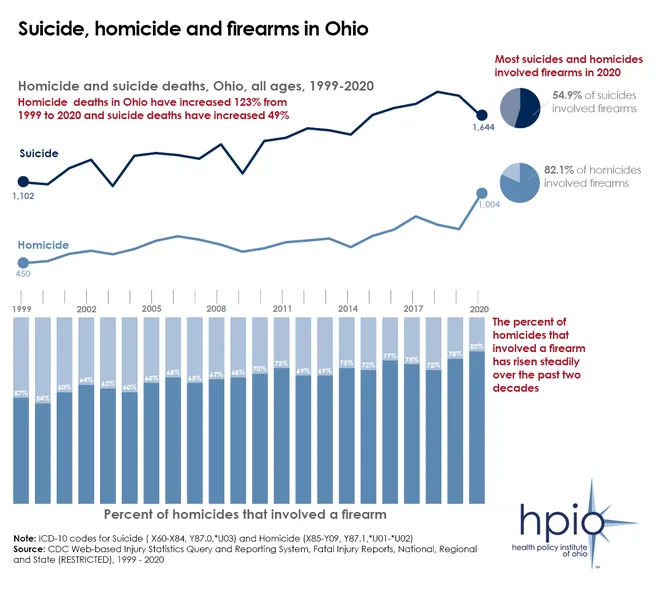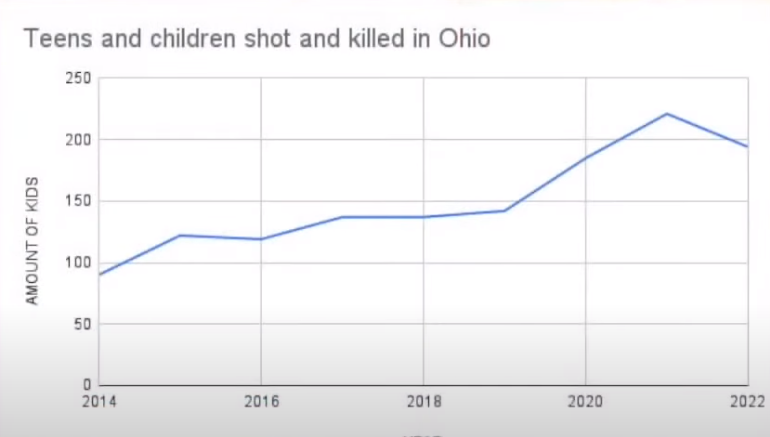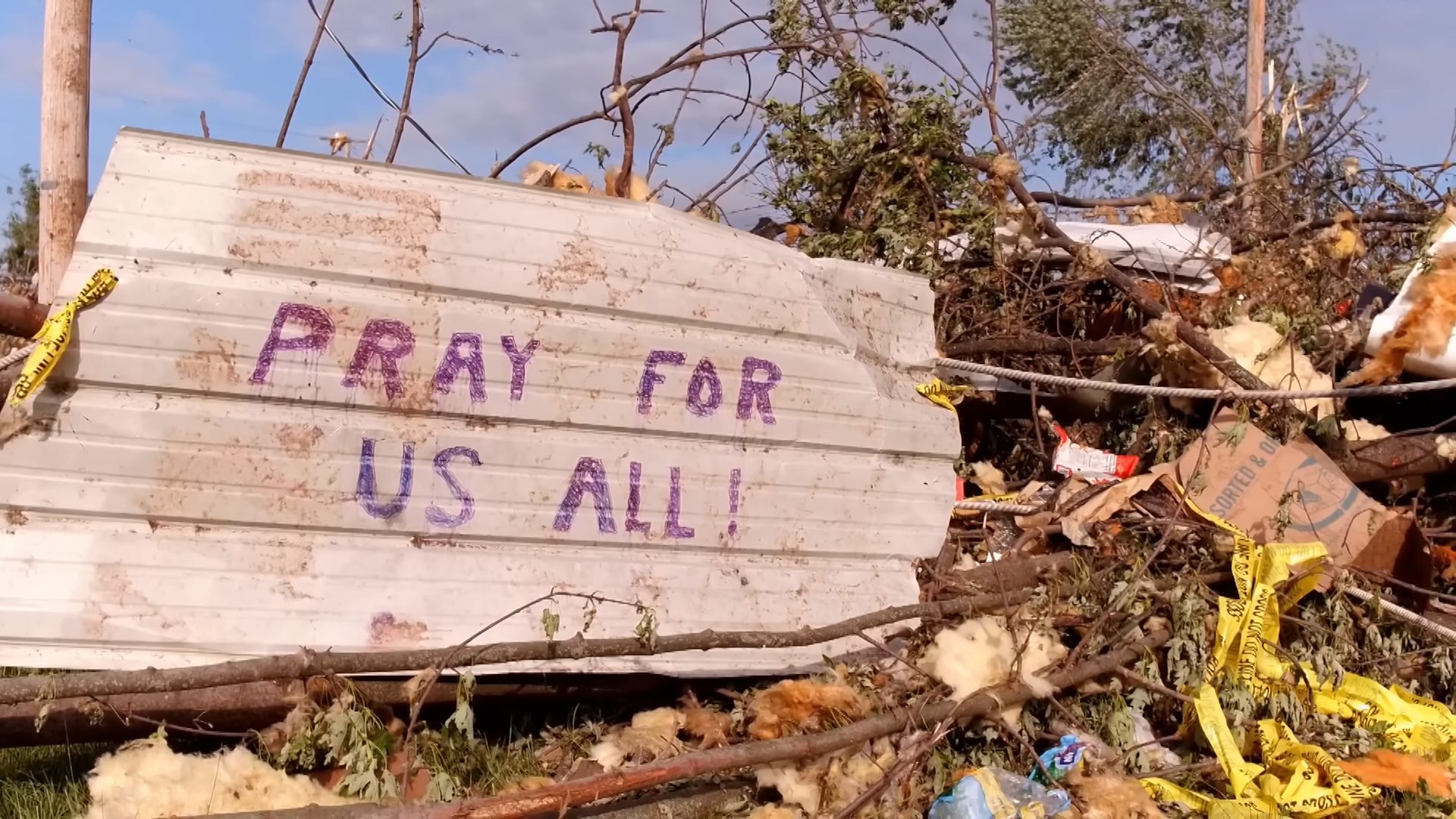The Health Policy Institute of Ohio (HPIO) has identified alarming trends regarding homicides and suicides in the state. Over the past 20 years, both types of deaths have risen significantly. Most troubling is the increased involvement of firearms in these incidents. That’s why Firearms and Ohio deaths became a burning issue.
The data show a clear correlation between the rise in violent deaths and firearm use, indicating a need for urgent attention and action. Understanding these trends is essential for implementing effective policies and interventions. This article explores the findings of HPIO and discusses potential solutions to address this critical issue.
Rising Rates of Homicides and Suicides
Rural areas in Ohio tend to have higher rates of suicide involving firearms, while urban areas see more firearm-related homicides.
Over the past twenty years, Ohio has seen a dramatic increase in both homicides and suicides. From 1999 to 2020, suicide deaths in Ohio surged by 49%, rising from 1,102 to 1,644. The number of homicides during the same period increased even more significantly, by 123%, from 450 to 1,004.
These statistics indicate a severe public health crisis that requires immediate attention and action. The use of firearms in these deaths has also seen a significant rise, suggesting that access to firearms is a critical factor in this alarming trend.
In 2020, 82% of homicides in Ohio involved firearms, up from 57% in 1999. For suicides, the percentage of firearm use rose to 54.9% in 2020.

Ohio Homicides and Suicides Statistics
Between 1999 and 2020, Ohio experienced a 49% increase in suicide deaths and a staggering 123% increase in homicides.
| Year | Suicide Deaths | % Increase in Suicides | Homicide Deaths | % Increase in Homicides | % of Homicides Involving Firearms | % of Suicides Involving Firearms |
|---|---|---|---|---|---|---|
| 1999 | 1,102 | — | 450 | — | 57% | — |
| 2020 | 1,644 | 49% | 1,004 | 123% | 82% | 54.9% |
The Role of Firearms
Young adults and teenagers are increasingly affected by both firearm-related suicides and homicides, raising concerns about firearm access among younger populations.
Firearms have played an increasingly larger role in both homicides and suicides in Ohio. In 1999, firearms were used in 57% of homicides. By 2020, this percentage had risen to 82%. Similarly, the use of firearms in suicides increased, with 54.9% of suicides in 2020 involving a firearm. These figures underscore the need to address firearm accessibility and safety measures.
The correlation between firearm availability and the rise in violent deaths suggests that stricter regulations and preventive measures could potentially reduce these tragic incidents.

If you are shot by someone in Ohio, you will have to pay for your hospital bills largely depends on the circumstances and your health insurance coverage.
Impact on Teens and Children
More Ohioans died from firearms in 2021 than almost any year on record, according to preliminary data from the Ohio Department of Health.
The rising trend in firearm-related deaths among teens and children in Ohio is deeply concerning. According to the data from 2014 to 2022, the number of young individuals shot and killed has almost doubled. From around 100 cases in 2014, the figures peaked at just over 200 in 2020 before a slight decline in 2022.
This sharp increase underscores the vulnerability of younger populations to gun violence and highlights an urgent need for targeted interventions. The increasing number of young victims not only reflects the broader trends of rising homicides and suicides but also points to specific risk factors that need to be addressed to protect Ohio’s youth.

This data calls for urgent policy and community responses to safeguard young lives. Implementing stricter firearm storage laws, enhancing educational programs on gun safety in schools, and developing community outreach initiatives can help prevent these tragic deaths. Each loss represents a profound impact on families and communities, leaving long-lasting emotional and social scars.
Therefore, preventive measures, such as mental health support and legislative reforms aimed at reducing gun accessibility to at-risk youth, are critical. Addressing the root causes of violence and providing comprehensive support systems can help mitigate this alarming trend and protect future generations.
Implications for Public Health
The rise in firearm-related deaths has prompted health organizations in Ohio to push for better mental health services and more wide firearm safety measures.
The rise in firearm-related deaths has significant implications for public health in Ohio. Each homicide and suicide represents not just a loss of life but also a profound impact on families, communities, and society as a whole. The trauma associated with these deaths can have long-lasting effects on mental health and community stability.
Addressing this issue requires a comprehensive approach that includes mental health support, community interventions, and legislative action aimed at reducing firearm-related violence.
Policy Considerations
Economic stress and unemployment have been linked to higher rates of both homicides and suicides, suggesting that economic policies could indirectly affect these statistics.
As Ohio policymakers debate firearm safety legislation, it is crucial to consider the latest data on the relationship between firearms, suicides, and homicides. Effective policies could include measures such as background checks, safe storage laws, and restrictions on the sale of certain types of firearms.
The goal of these policies would be to reduce access to firearms for individuals at risk of committing violence against themselves or others. Additionally, enhancing mental health services and providing support for at-risk individuals are essential components of a holistic approach to reducing these tragic deaths.
Community and Mental Health Support
Various community-based initiatives in Ohio aim to address the root causes of violence and provide support to those at risk, although their impact is still being evaluated.
Strengthening community and mental health support is vital in addressing the rising rates of homicides and suicides. Programs that offer mental health counseling, crisis intervention, and community support can help prevent these deaths.
Educating the public about the signs of suicidal behavior and the importance of seeking help can also play a crucial role. Community-based initiatives that foster safe environments and provide resources for those in need can help mitigate the factors that lead to violence and self-harm.
FAQs
Conclusion
The data that HPIO studied shows Ohio has work to do in dealing with homicides and suicides. But if we come together through tough times, get help for mental health issues, and make smart laws about guns, the numbers can start improving.
It won’t be easy, but by supporting each other and programs that help, like what HPIO suggests, our communities can become places where people feel happier and safer. Our friends and neighbors need to know someone cares. If we keep learning from groups like HPIO and talking respectfully, Ohio can get through this.

